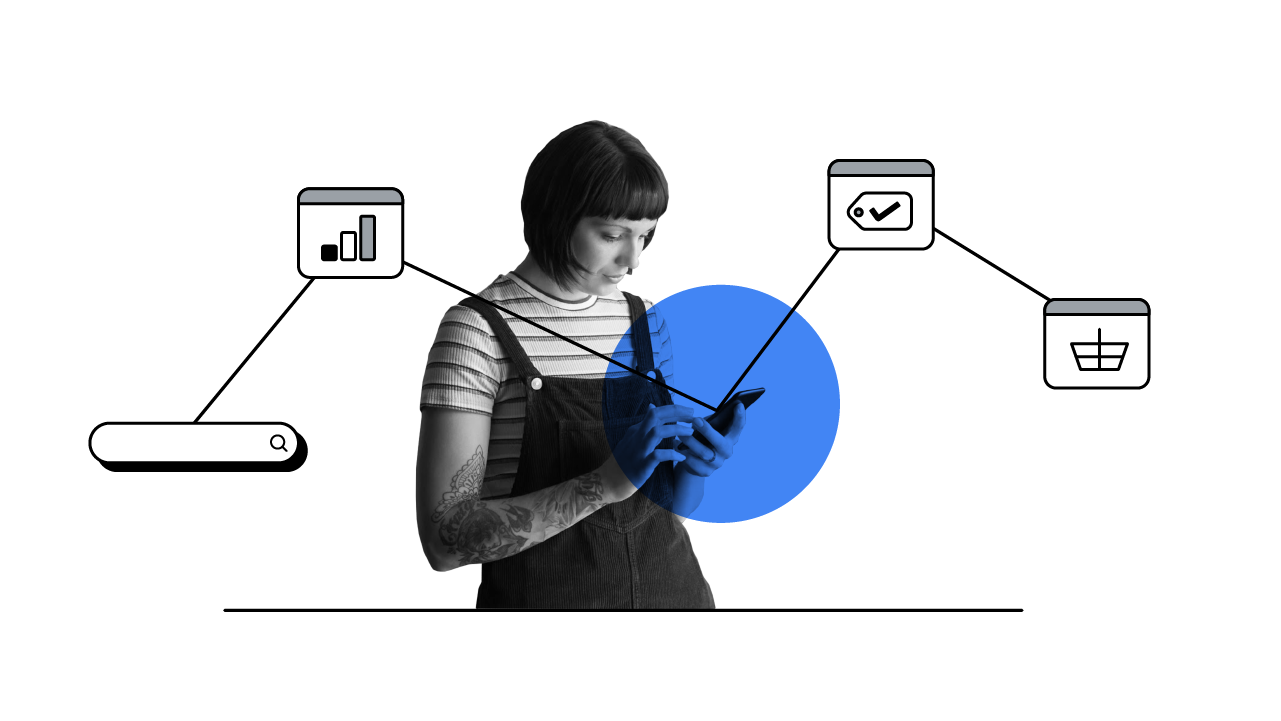Now more than ever, people are turning to apps to stay healthy, productive, connected, and informed. In fact, worldwide, average weekly time spent in apps grew 20% year over year in Q1 2020,1 suggesting apps are making a difference in how people navigate through this unprecedented time.

Given this shift in consumer behaviour, companies are looking to adapt their app strategies — and in some cases, even their business models — to be there for customers. For inspiration on how to meet customers in the right moment, here are some examples of brands that have been successful in pivoting their app experience during the coronavirus situation to deliver the assistance users are seeking.
Respond quickly to meet market demands
With many cities in lockdown, people are looking to stay active and healthy at home. Fitness company Down Dog offers custom yoga classes to thousands of users. The brand is now providing free access to its suite of apps. It’s also ramped up its assistance efforts in markets most impacted by the COVID-19 pandemic. “France, Italy, and Spain need a lot of help right now,” said Down Dog Founder Carlos Ormachea. “And because we dynamically generate the content, it was relatively quick to translate all of it. More than 400,000 people have downloaded our app in those areas in the last few weeks.”
Expand partnerships and rethink marketing goals
Consider leveraging partnerships to be there for people during the coronavirus pandemic. For instance, Ruangguru — an educational technology app from Indonesia — is partnering with a local telecom company to offer free online courses and 30GB in free data. The effort was recognised by Indonesian President Joko Widodo in a nationwide address. Leaning in to this moment, Ruangguru shifted its strategy to focus on PR and scaled user acquisition, with a plan to implement remarketing campaigns to its most engaged users.
Extend helpfulness to service providers and partners
Food delivery, of course, is also top of mind. People are seeking ways to support local restaurants, but they also want assurance delivery apps are taking the right precautions. Search interest for “is food delivery safe” has increased 650% across the U.S. since the beginning of March.2
The most sustainable way for Wolt to increase restaurant orders is to invest in increasing overall demand.
Wolt, a food delivery app in 22 markets in EMEA, says it’s heard from its partner restaurants that they’ve lost 50% to 80% of their weekly sales. As such, Wolt believes the most sustainable way for it to increase restaurant orders is to invest in increasing overall demand.
In the past month, Wolt rolled out a series of changes to their app to support users, local businesses, and its employees. In addition to introducing a contactless delivery option for users, Wolt is waiving restaurant commissions on pickup orders for 30 days, highlighting local independent restaurants on its app, and ensuring dedicated pickup areas to reduce contact between couriers and restaurant workers. For its courier partners, Wolt launched the COVID-19 Support Program, which provides financial support to those who fall ill due to COVID-19 or who are put into mandatory quarantine.
As people self-isolate, social apps have become essential tools for keeping users up to date and informed.
Adapt your app strategy to new user needs
We know that 71% of consumers are interested in hearing from brands that can help them navigate this crisis.3 As people self-isolate, social apps have become essential tools for keeping users up to date and informed. Nextdoor, for example, is a hyperlocal app which helps neighbours stay connected and share information, such as how to support struggling local businesses or how to provide aid to health care workers. In March alone, Nextdoor saw an 80% month-over-month increase in daily engagement as users turn to the platform to rally around their communities.
To deliver greater assistance in this moment, Nextdoor adapted by creating new features aimed at responding to immediate needs, while ensuring other core features are still discoverable to retain users for the long term. Help Maps, for instance, lets users indicate when they’re available to help a neighbour in need. The app also sends notifications to encourage members to review new guidance from trusted public health officials. Nextdoor even implemented a feature that allows users to report posts with misinformation that are then reviewed by the Nextdoor team.

Communicate with users often and sensitively
Over 1 in 3 consumers have started using a new brand as a result of the innovative or compassionate way they’ve responded to the pandemic.4 This finding helps inform why apps are uniquely positioned to maintain a consistent dialogue as dynamics shift. Proactively engage with users as you respond to these shifts, and provide clear context as to why you’re making changes.
Apps have long been powerful tools to connect people, build relationships, and drive loyalty. At a time when people are seeking reliable assistance and relevant information, be there with helpfulness and dependability they won’t forget.







